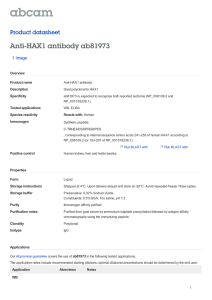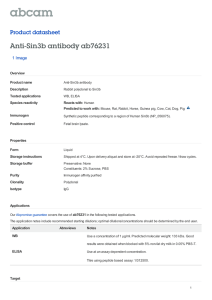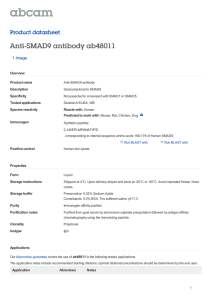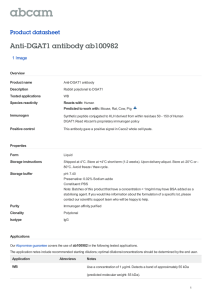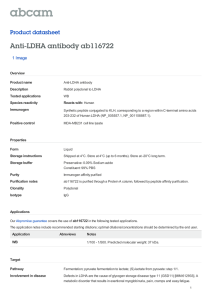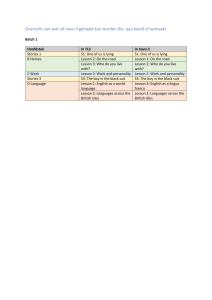Anti-HAX1 antibody ab87185 Product datasheet 1 Image
advertisement
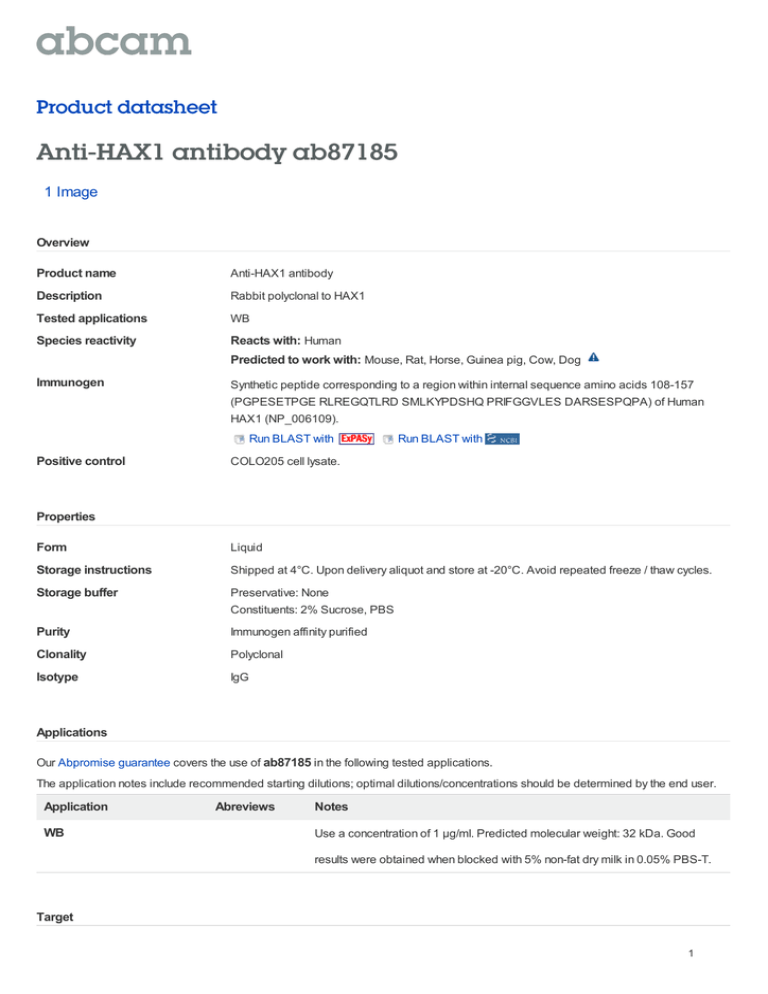
Product datasheet Anti-HAX1 antibody ab87185 1 Image Overview Product name Anti-HAX1 antibody Description Rabbit polyclonal to HAX1 Tested applications WB Species reactivity Reacts with: Human Predicted to work with: Mouse, Rat, Horse, Guinea pig, Cow, Dog Immunogen Synthetic peptide corresponding to a region within internal sequence amino acids 108-157 (PGPESETPGE RLREGQTLRD SMLKYPDSHQ PRIFGGVLES DARSESPQPA) of Human HAX1 (NP_006109). Run BLAST with Positive control Run BLAST with COLO205 cell lysate. Properties Form Liquid Storage instructions Shipped at 4°C. Upon delivery aliquot and store at -20°C. Avoid repeated freeze / thaw cycles. Storage buffer Preservative: None Constituents: 2% Sucrose, PBS Purity Immunogen affinity purified Clonality Polyclonal Isotype IgG Applications Our Abpromise guarantee covers the use of ab87185 in the following tested applications. The application notes include recommended starting dilutions; optimal dilutions/concentrations should be determined by the end user. Application WB Abreviews Notes Use a concentration of 1 µg/ml. Predicted molecular weight: 32 kDa. Good results were obtained when blocked with 5% non-fat dry milk in 0.05% PBS-T. Target 1 Function Promotes cell survival. Potentiates GNA13-mediated cell migration. Involved in the clathrinmediated endocytosis pathway. May be involved in internalization of ABC transporters such as ABCB11. May inhibit CASP9 and CASP3. May regulate intracellular calcium pools. Tissue specificity Ubiquitous. Up-regulated in oral cancers. Involvement in disease Defects in HAX1 are the cause of neutropenia severe congenital autosomal recessive type 3 (SCN3) [MIM:610738]; also known as Kostmann disease. A disorder of hematopoiesis characterized by maturation arrest of granulopoiesis at the level of promyelocytes with peripheral blood absolute neutrophil counts below 0.5 x 10(9)/l and early onset of severe bacterial infections. Some patients affected by severe congenital neutropenia type 3 have neurological manifestations such as psychomotor retardation and seizures. Note=The clinical phenotype due to HAX1 deficiency appears to depend on the localization of the mutations and their influence on the transcript variants. Mutations affecting exclusively isoform 1 are associated with isolated congenital neutropenia, whereas mutations affecting both isoform 1 and isoform 5 are associated with additional neurologic symptoms. Sequence similarities Belongs to the HAX1 family. Post-translational modifications Proteolytically cleaved by caspase-3 during apoptosis. Cellular localization Mitochondrion. Endoplasmic reticulum. Nucleus membrane. Cytoplasmic vesicle. Sarcoplasmic reticulum. Anti-HAX1 antibody images Anti-HAX1 antibody (ab87185) at 1 µg/ml (in 5% skim milk / PBS buffer) + COLO205 cell lysate at 10 µg Secondary HRP conjugated anti-Rabbit IgG at 1/50000 dilution Predicted band size : 32 kDa Observed band size : 30 kDa Additional bands at : 50 kDa,90 kDa. We Western blot - HAX1 antibody (ab87185) are unsure as to the identity of these extra bands. Please note: All products are "FOR RESEARCH USE ONLY AND ARE NOT INTENDED FOR DIAGNOSTIC OR THERAPEUTIC USE" Our Abpromise to you: Quality guaranteed and expert technical support Replacement or refund for products not performing as stated on the datasheet Valid for 12 months from date of delivery Response to your inquiry within 24 hours We provide support in Chinese, English, French, German, Japanese and Spanish Extensive multi-media technical resources to help you We investigate all quality concerns to ensure our products perform to the highest standards If the product does not perform as described on this datasheet, we will offer a refund or replacement. For full details of the Abpromise, 2 please visit http://www.abcam.com/abpromise or contact our technical team. Terms and conditions Guarantee only valid for products bought direct from Abcam or one of our authorized distributors 3
